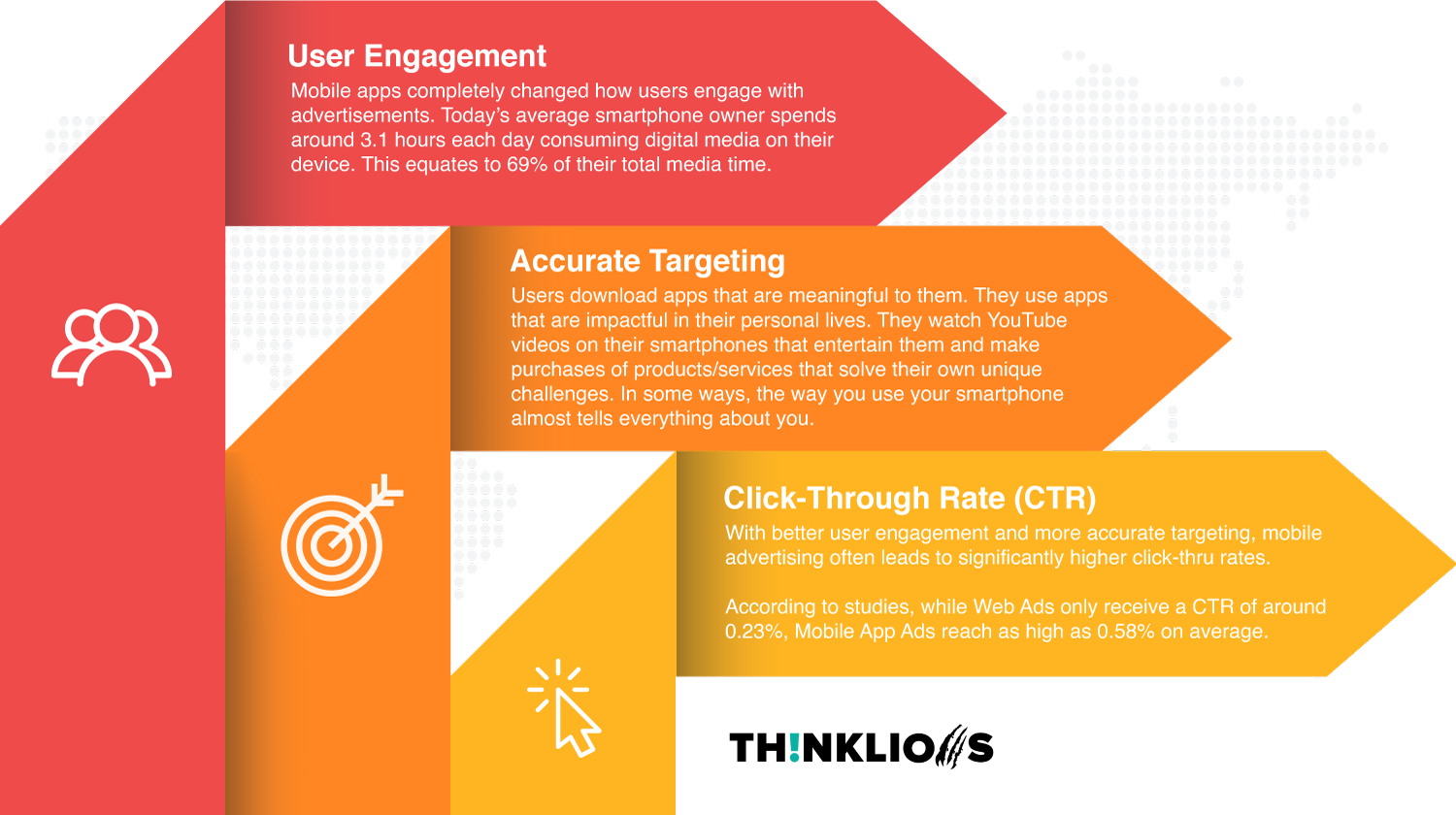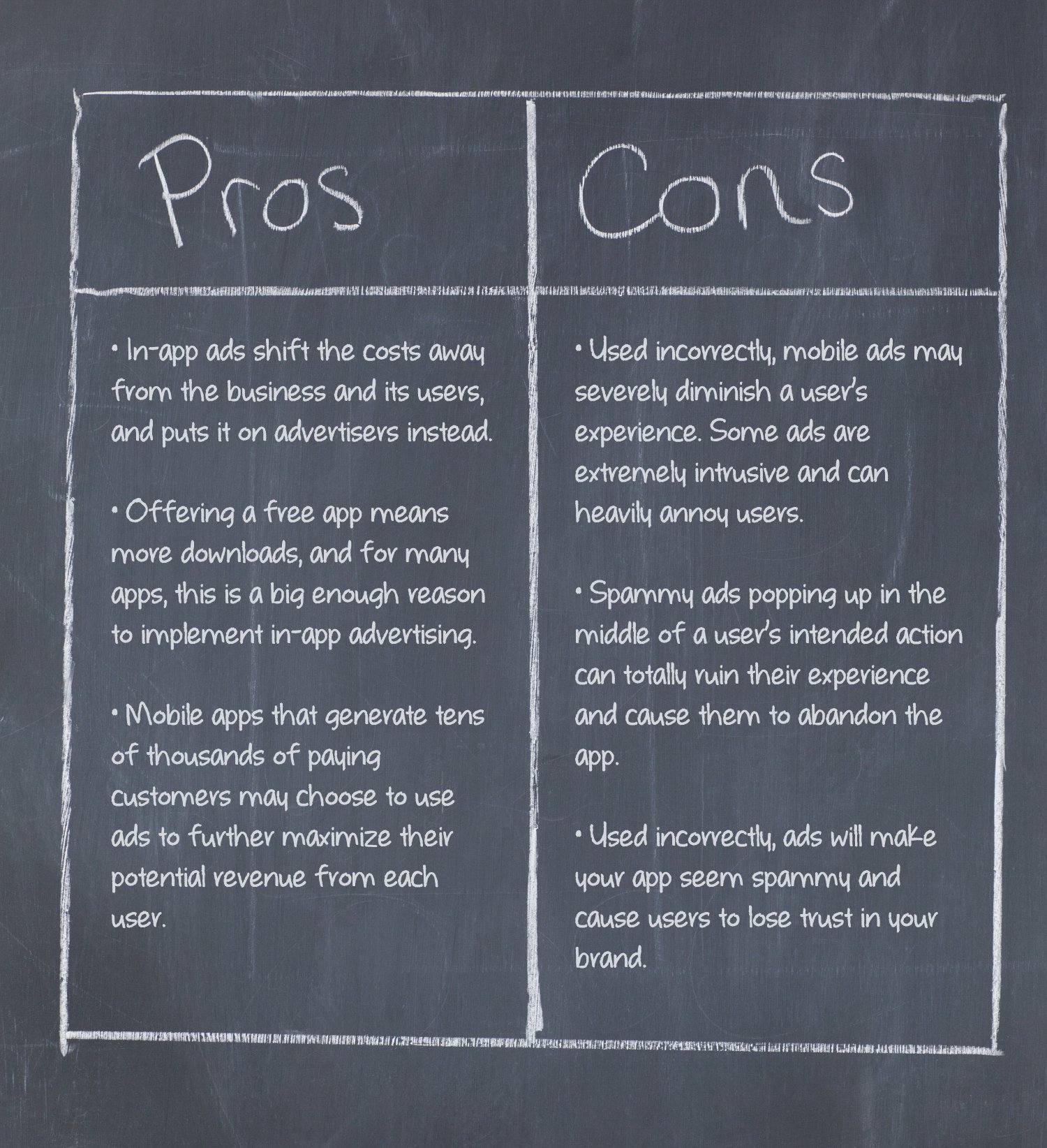Mobile app advertising, or in-app advertising, has become one of the most successful monetization strategies for app entrepreneurs. For marketers, it is an effective method to reach targeted customers and drive new sales. But, how does it work? More importantly, is mobile app advertising a viable option to help you monetize your app? In this post, we’re going to break down everything you need to know about using in-app advertising as a monetization method.
What is Mobile App Advertising?
In-app advertising is the method of delivering marketing messages to consumers through apps on their smartphone devices. For marketers, mobile advertising is an effective way to display advertisements to consumers.
In exchange for that advertising, marketers pay a fee that is collected by the app’s creators – providing an effective and profitable monetization method for many apps.
The History of Mobile Advertising
Although smartphones existed even before the iPhone, it was the launch of the iPhone that gave way to mobile ads. When the App Store launched, the concept of “mobile apps” was introduced – software that was built specifically for the device; unlike traditional mobile websites that were built for display on desktops.
Many of these early apps were free to users. However, apps are expensive to build, market, and maintain. App developers needed a way to earn back their expenses – and hopefully, create a profit.
Enter mobile app advertising.
As smartphones quickly penetrated the entire globe, mobile apps became more integral in marketing and advertising. For the first time ever, advertisers could connect with consumers right at their fingertips.
The Value of In-App Advertising to Marketers
In-app advertising grew to over $70 billion in 2018, a 20% increase from a year before. According to eMarketer, this represented over 75% of the total digital spend.
But what makes mobile app advertising so attractive to marketers? There are several major benefits to advertising through mobile apps.
User Engagement
At one point in time, television commercials were all the rage. The only problem? Viewers weren’t that engaged. Even if they were engaged with the show they were watching, they’d walk away from the television or flip to a new channel when commercials came on.
Mobile apps completely changed how users engage with advertisements. Today’s average smartphone owner spends around 3.1 hours each day consuming digital media on their device. This equates to 69% of their total media time.
Not only do users now spend an unusually lengthy amount of time on their mobile phones, but they are also increasingly using mobile to make purchases. In 2017, mobile e-commerce sales already accounted for 34.5% of total e-commerce sales. By 2021, it is expected that this number will rise to 54%.
Accurate Targeting
It’s incredible how much information one’s phone is able to collect about their interests and purchasing habits. Unlike a desktop computer or even a tablet, mobile phones are often unique to the device’s owner.
Users download apps that are meaningful to them. They use apps that are impactful in their personal lives. They watch YouTube videos on their smartphones that entertain them and make purchases of products/services that solve their own unique challenges. In some ways, the way you use your smartphone almost tells everything about you.
This data allows marketers to target consumers more accurately than was previously possible. Whether by demographics, spending habits, location, or etc.; marketers can now promote their products and services directly to their ideal customer. As a result, they are able to convert higher and spend less on customer acquisition.
Click-Through Rate (CTR)
With better user engagement and more accurate targeting, mobile advertising often leads to significantly higher click-thru rates.
According to studies, while web ads only receive a CTR of around 0.23%, mobile app ads reach as high as 0.58% on average.
For companies, higher CTRs mean more customers and less money. It’s not hard to see why advertisers increasingly prefer mobile app advertising over other marketing avenues.
Should You Offer Ads In Your Mobile App?
Now that you know what mobile app advertising is, it’s time to answer the most important question. Should you use in-app advertising as a monetization strategy for your app? The answer to this question is — well, it depends.
There are a number of benefits and weaknesses associated with offering mobile ads. When deciding whether you should monetize this way, consider the following pros and cons.
Pros of Mobile App Advertising
There are several reasons that an app creator would decide to add in-app advertising. Mostly, these benefits revolve around the ability to monetize.
In-app ads shift the costs away from the business and its users and put them on advertisers instead. Over the last decade, app developers have realized that free apps are downloaded much more often than paid applications. Instead of making the consumer pay to download the application, they could offer it for free, but charge advertisers to market their products/services to users. Offering a free app means more downloads, and for many apps, this is a big enough reason to implement in-app advertising.
In-app advertising is also often used as a secondary method of revenue generation. Although paid apps don’t attract as many users, pay per download is still quite common. Instead of supplementing income with ads, mobile apps that generate tens of thousands of paying customers may choose to use ads to further maximize their potential revenue from each user.
Cons of Mobile App Advertising
While the monetary draw of mobile ads can be tempting, they don’t always provide a positive experience. In fact, monetizing with ads can have the opposite effect and cause you to lose users and earn less money.
Used incorrectly, mobile ads may severely diminish a user’s experience. Some ads are extremely intrusive and can heavily annoy users. Consumers are forced to see ads all day long, from billboards as they drive to video ads on their favorite TV streaming platforms. Sometimes, consumers just want the ability to do something (anything!) without being advertised to.
Some of this intrusiveness can be managed by ad format, placement and timing. Spammy ads popping up in the middle of a user’s intended action can totally ruin their experience and cause them to abandon the app. Users already paying for an app are even more likely to get annoyed by advertisements.
Just be careful and know – when using ads, you run the risk of making your app seem spammy and may cause users to lose trust in your brand.
Best In-App Advertising Platforms
For app developers that choose this route of monetization, there are several platforms that make it easy to implement and track ads.
Here are a few of our favorites:
- AdMob: Google AdMob is an ad platform that maximizes the value of every impression by combining global advertiser demand, innovative ad formats, and advanced app monetization technology. AdMob works with millions of advertisers across a variety of industries, providing a variety of ad formats including rewarded, native, banner and interstitial.
- AppLovin: This platform is a multi-faceted solution that allows mobile game developers to earn revenue and engage users in a single place. AppLovin helps increase app revenue for developers by working with advertisers around the world.
- Vungle: This solution allows app developers to reimagine the way their app makes money by showing innovative content from global advertisers. Vungle works to improve the ad experience by bringing pixel-perfect, tech-tailored formats that blend in without slowdowns or interruptions.
Making A Decision
Now that you know what it takes to earn revenue through mobile app advertising, it’s time to decide whether you will use ads in your app.
The best way for an app entrepreneur to decide on which monetization strategy is best is to test them. Set up a monetization strategy and send traffic to it for a few weeks to see how it performs. If it performs negatively, pivot to something else. However, if it performs positively, then continue to persevere – you’re on the right track to earning revenue!
Do you use in-app advertising to monetize your smartphone app? Tell us about it in the comments below!











